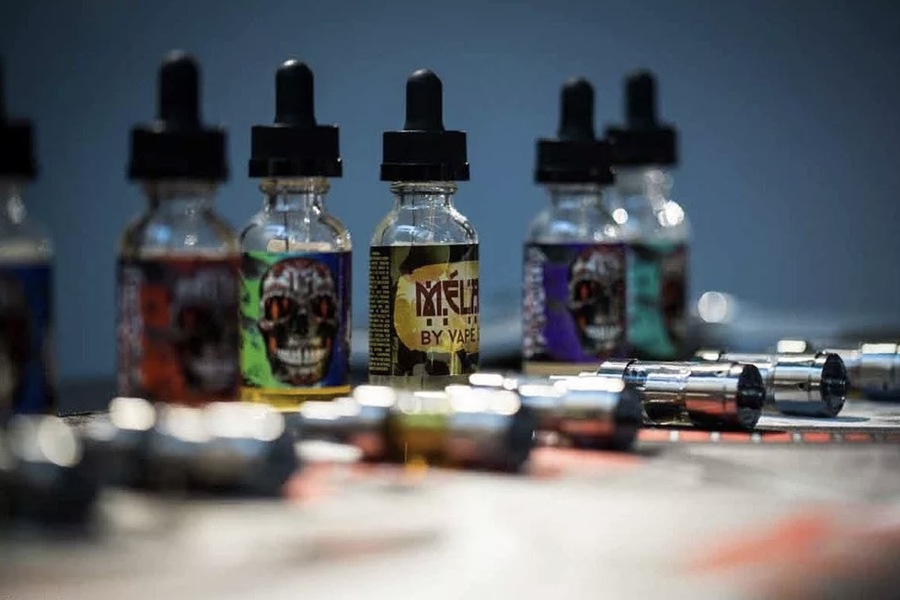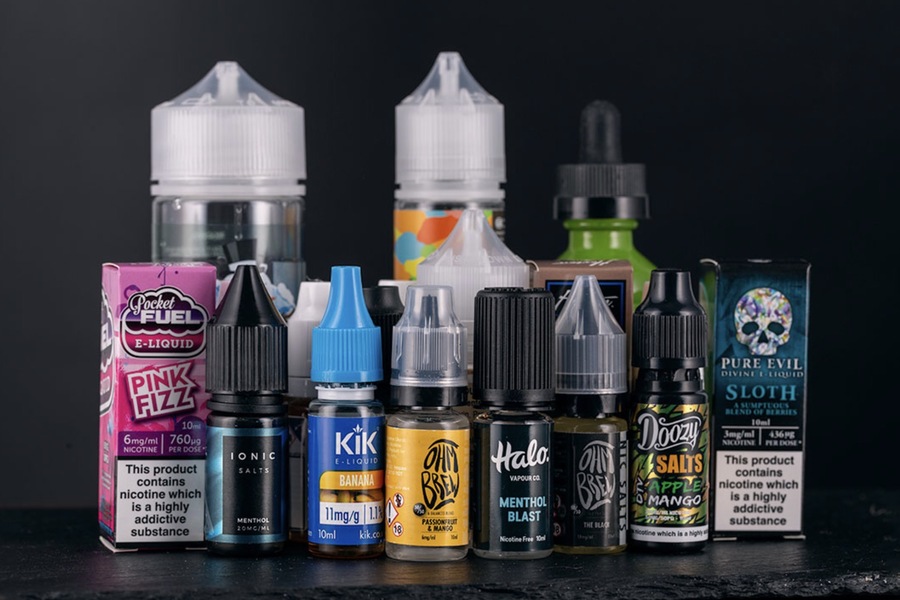Flavor chemistry is a critical component in the vaping industry, particularly for disposable vape pod devices. The creation and optimization of e-liquid flavors involve a complex interplay of chemical compounds, sensory science, and regulatory considerations. This article delves into the science of flavor chemistry in a disposable pod device, highlighting its importance, the processes involved, and the impact on consumer satisfaction and safety.
Introduction to Flavor Chemistry
Flavor chemistry is the study of how various chemical compounds interact to create specific tastes and aromas. In the context of disposable pod devices, this involves the formulation of e-liquids that deliver consistent and enjoyable flavors when vaporized. The goal is to replicate familiar tastes, create new experiences, and provide a satisfying alternative to traditional tobacco products.
Key Components of E-Liquid Flavors
1. Flavoring Agents
Flavoring agents are the primary ingredients responsible for the taste and aroma of e-liquids. These can be natural extracts, synthetic compounds, or a combination of both. The choice of flavoring agents depends on the desired flavor profile and the compatibility with other e-liquid components.
2. Propylene Glycol (PG) and Vegetable Glycerin (VG)
Propylene glycol (PG) and vegetable glycerin (VG) serve as the foundation for e-liquids. They act as vessels for the flavoring agents and nicotine if they are included. PG is renowned for its knack for intensifying flavors and delivering a more pronounced throat hit, while VG creates denser clouds of vapor and a velvety smooth sensation in the mouth. When it comes to e-liquids, the ratio of PG to VG plays a crucial role in determining the flavor delivery and overall vaping experience.
3. Nicotine
Nicotine, when present, adds a peppery taste to the e-liquid. The concentration of nicotine can also influence the perception of flavor, as higher nicotine levels can enhance or mask certain taste notes. Nicotine salts, a more stable form of nicotine, are commonly used in disposable pod devices to provide a smoother throat hit and faster nicotine absorption.

The Science Behind Flavor Creation
1. Flavor Formulation
Creating e-liquid flavors involves a meticulous process of formulation and testing. Flavor chemists blend various compounds to achieve the desired taste and aroma profiles. This process requires a deep understanding of the chemical properties of each ingredient and how they interact with one another when vaporized.
2. Sensory Evaluation
Sensory evaluation is a crucial step in flavor development. It involves taste testing by trained panels to assess the flavor’s intensity, balance, and overall appeal. This feedback is used to refine the formulation and ensure that the final product meets customer expectations.
3. Stability Testing
Stability testing ensures that the flavor remains consistent over time and under different storage conditions. E-liquids are subjected to various environmental factors, such as temperature and light exposure, to evaluate any changes in flavor or quality. Stability is particularly important for disposable pod devices, as they may be stored for extended periods before use.
Popular Flavor Profiles in Disposable Pod Devices
1. Tobacco Flavors
Tobacco flavors aim to replicate the taste of traditional cigarettes, offering a familiar experience for smokers transitioning to vaping. These flavors often combine natural and synthetic compounds to mimic the complex aroma and taste of tobacco leaves.
2. Menthol and Mint Flavors
Menthol and mint flavors are popular for their cooling and refreshing sensation. These flavors are created using menthol crystals or synthetic menthol compounds, which provide a distinct cooling effect on the palate.
3. Fruity Flavors
Fruity flavors are a staple in the vaping industry, offering a wide range of taste experiences from sweet and tangy to tart and tropical. These flavors are typically formulated using fruit extracts, essential oils, and synthetic compounds to achieve a natural and vibrant taste.
4. Dessert Flavors
Dessert flavors mimic the taste of sweet treats, such as vanilla custard, chocolate, and caramel. These flavors often involve complex formulations to replicate the rich and layered taste profiles of desserts.
Impact of Flavor Chemistry on Consumer Satisfaction
1. Flavor Consistency
Consistency is key to consumer satisfaction in the vaping industry. Disposable pod devices rely on precise flavor formulations to ensure that each puff delivers the same taste experience. Inconsistent flavors can lead to a disappointing vaping experience and negatively impact brand loyalty.
2. Flavor Intensity
The intensity of the flavor is another important factor. E-liquids must strike a balance between being too weak or too overpowering. Flavor chemists work to achieve the optimal concentration of flavoring agents to provide a satisfying taste without overwhelming the user.
3. Throat Hit and Mouthfeel
The throat hit, and the combination of PG, VG, nicotine, and flavoring agents influences mouthfeel. A well-balanced e-liquid provides a pleasant throat hit and a smooth, enjoyable mouthfeel. This balance is essential for user satisfaction, particularly for those using disposable pod devices.
Regulatory Considerations
1. Ingredient Safety
The safety of flavoring agents is a primary concern in the vaping industry. Regulatory bodies, such as the FDA in the United States and the European Commission in the EU, have established guidelines for the use of flavoring agents in e-liquids. These regulations aim to ensure that the ingredients used are safe for inhalation.
2. Labeling and Packaging
Regulations also mandate clear labeling and packaging of e-liquids to inform consumers about the ingredients and potential risks. This includes listing all flavoring agents, nicotine content, and any allergens. Proper labeling helps consumers make informed choices and ensures compliance with safety standards.
3. Testing and Compliance
Manufacturers are required to conduct rigorous testing of their e-liquids to ensure compliance with regulatory standards. This includes testing for harmful substances, such as diacetyl and acetyl propionyl, which are associated with respiratory issues. Compliance with these regulations is crucial for the safety and well-being of consumers.

The Future of Flavor Chemistry in Vaping
1. Innovative Flavor Technologies
The vaping industry continues to innovate, with new flavor technologies emerging to enhance the vaping experience. This includes the development of more stable and long-lasting flavoring agents, as well as the use of nanotechnology to improve flavor delivery and consistency.
2. Customization and Personalization
As consumer preferences evolve, there is a growing demand for customizable and personalized vaping experiences. Manufacturers are exploring ways to allow users to tailor their flavor profiles, such as adjustable nicotine levels and mix-and-match flavor options. This trend toward personalization is likely to shape the future of flavor chemistry in vaping.
3. Sustainable and Natural Flavors
Sustainability and natural ingredients are becoming increasingly important to consumers. The industry is responding by developing e-liquids that use sustainably sourced and natural flavoring agents. This shift towards eco-friendly practices is expected to drive innovation in flavor chemistry and enhance the overall appeal of disposable pod devices.
Conclusion
Flavor chemistry is incredibly important in the vaping industry, especially when it comes to creating and perfecting disposable pod devices. Creating and perfecting e-liquid flavors requires a comprehensive knowledge of chemical interactions, sensory science, and regulatory compliance. By prioritizing flavor consistency, intensity, and safety, manufacturers can enhance consumer satisfaction and ensure the continued growth and success of the vaping market.
In the ever-changing industry, continuous innovation in flavor technologies, customization options, and sustainable practices will play a crucial role in shaping the future of flavor chemistry in vaping. Keeping up with these developments and grasping the factors that impact flavor creation can assist consumers in making informed decisions and enhancing their vaping experience.



